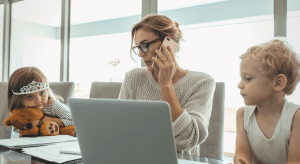Episode Notes
Male socialisation and ideals of masculinity already have a devastating effect on the health and well-being of men across the globe. With the added pressures from COVID-19, and forced isolation, this issue is turning into another kind of pandemic. Join Professor Jane Pirkis, Director of the Centre for Mental Health at the University of Melbourne speaking with journalist Ginger Gorman as they discuss their common area of expertise: suicide representation and prevention in the media. Listen as they consider how we can best look out for each other, encourage people to seek support, and learn alternative ways to check in with mates in our new normal.
TRANSCRIPT FROM THIS EPISODE:
[Start of recorded material]
Ginger Gorman: Good day and thank you for tuning into Seriously Social. This is the podcast where we use the lens of the social sciences to help us consider all kinds of tricky aspects of Australian society, our relationships, human connections and societal structures. We get experts to give us new insights and help us think about things in new ways.
This season, we are focusing on our world in transition and, among other things, we’ve had a particular focus on the nation’s mental health in these very uncertain times.
With me now is Professor Jane Pirkis. She’s Director of the Centre for Mental Health in the Melbourne School of Population and Global Health at the University of Melbourne. And Jane is an expert in suicide prevention and the media. She’s also a Fellow of the Academy of Social Sciences in Australia.
Jane, thank you so much for joining me.
Professor Jane Pirkis: My pleasure, Ginger. [00:59]
Ginger: The pandemic has clearly put a lot of stress on individuals, families and communities and we’ve been talking about this a lot in this season of Seriously Social. I’m wondering, with your expertise, if you think that this will lead to more suicide in our community or more suicide attempts?
Professor Jane Pirkis: [01:17] Well, I think what we can say is that some of the factors that place people at heightened risk for suicide are likely to be increased during the pandemic. So, for example, financial hardship is known to place people at risk. But I think the thing that we need to think about is how to absolutely mitigate those risks, and we are and other countries around the world are.
So, a lot of the kinds of things we might be doing, probably fall completely outside the mental health system and are more to do with things like making sure that there’s really good income support for people who might have lost jobs and working out ways to create jobs in this new environment that we’re in.
But the other thing I would say as well is that some of the protective factors that mean that people are less likely to get to the point where they might be considering suicide are also heightened during the pandemic. So, there are lots of great examples of communities rallying around people who might be quite isolated, for example. [02:18]
Ginger: I read some statistics talking about the most at-risk groups in our community and one of them is older men, I think, over the age of 85. And I thought that’s interesting because, in the pandemic, people have been particularly focusing on older people in their community, and dropping them groceries, and medications and things like that. So, I’m wondering if we might see some change in some of those risk groups.
Professor Jane Pirkis: [02:44] Yeah, possibly. And I guess it goes back to the point I was trying to make about really wanting to make sure that we are aware of the things that might mean that people aren’t traveling so well, and aware of particular groups who might not be traveling so well and really looking out for them.
There are some good examples. I was talking to some folk from Men’s Sheds, who have thought about ways of keeping their men connected during the pandemic. So, some of them are running their whole Sheds on Zoom, I think. And often, that is older men in the community for whom the Sheds are really important to stay connected. [03:16]
Ginger: Yes. And for people that don’t know, these are sheds that are all over Australia, often in rural communities that older men are going to be to be with each other, but they do incredible things. They make amazing things with their hands out of wood and metal and so forth. And it really has proved a lifeline. And we’ll talk about your documentary, Man Up, in a moment, but I love the scenes in Man Up where the men were in a shed, making all these beautiful things and really bonding with each other and connecting.
I’m really interested in your expertise in terms of suicide prevention and the media. You’ve made this connection, which perhaps many of us, including me, don’t really understand. What’s that connection?
Professor Jane Pirkis: [04.01] So, I have done quite a lot of work over the years in suicide in the media. And some of the earlier stuff I did was about how not such great reporting of suicide can lead to spikes in suicides that you see in the statistics. So, for example, reporting that might glorify suicide or be really explicit about suicide methods, that kind of thing, some of that work and the work of others around the world has led to really good guidelines for journalists.
Australian journalists do a fantastic job for the most part these days and the Mindframe guidelines that they follow are really good. People know about them who work in the media. New graduate journalists coming out of journalism school will have all been exposed to the Mindframe guidelines, which are all about responsible reporting.
So, that was what I did early on, but then I started to shift my thinking and, rather than thinking about the potential negative aspects of how the media might report on suicide and what that might mean for suicide rates, whether there were opportunities for the media to be a force for good in suicide prevention. And absolutely, I think the media does have a really important role to play [05:11]
Ginger: I want to pick those two things apart with you and, actually, I have a lot of experience with Mindframe and the Mindframe guidelines myself because I’ve done a lot of reporting around suicide and self-harm. And it is so interesting, Jane, because when I started my media career 20 years ago, we were terrified of writing anything about suicide because we didn’t want those copycat incidents that you’re talking about.
And so, often, we just didn’t report on it and we were afraid. But once I got hold of those Mindframe guidelines, which are really clear about don’t talk about the method, give help‑seeking information, they’re absolutely amazing, I have actually rewritten some of my big investigations with news.com.au about self‑harm from start to finish, based on those guidelines.
And so, it is amazing to have those resources and it has changed. But I noticed in places like Britain, it hasn’t. You’ll quite often read an article in the Telegraph or The Daily Mail or something, which really does go into depth about how someone died by suicide.
Professor Jane Pirkis: [06.11] I think Australia has definitely led the way in good reporting. I think there are obviously examples of good and bad reporting here, but also examples of good and bad reporting in places like Britain. [06:23]
Ginger: What does that do, in your mind, if reporters like myself and others are using those Mindframe guidelines? What does it do in terms of suicide and suicide prevention?
Professor Jane Pirkis: [06.33] It minimizes the risk of vulnerable people reading a story about suicide and identifying with the person who might have died. It helps with framing the story in positive ways, and in particular, I guess, creating whole completely different stories about people overcoming a suicidal crisis, for example. So, I think it does that.
But I think it also does more than that. I think it creates the opportunity for journalists to be part of the broader suicide prevention community, raising awareness about suicide, the kinds of activities that are happening around Australian and elsewhere to prevent suicide. It’s really quite a big role, I think. [07:18]
Ginger: And I tended to shift my focus from the actual facts of what happened to the person who might have died to the emotional issues around it and how someone who might be reading it, finding themselves in a similar situation could get help, how they could reconnect with their community and find some joy in their life instead of feeling like, “Here’s the method that you can do this with.”
This is a really interesting link to your Man Up series. So, you made this three‑part documentary series with a team in 2016. And it was an extraordinary project. I’ve just binge-watched all three of them and I actually laughed and cried and felt joy in them. Tell me about this project.
Professor Jane Pirkis: [08:01] So, it was a fantastic project. It was one of those projects as an academic that comes around just every once in a while and it was fantastic to work on. So, we had some funding from Movember to work with this fantastic production company, called Heiress Films. So, we Man Up, which follows Gus Worland, who a lot of people probably know was a commercial radio announcer.
So, Gus goes on a journey, trying to understand why suicide rates in Australia are so much higher for men than for women, and think through some of the things that we might do about that. And he goes all over the country, really, into rural areas, into workplaces, just investigating different approaches people have taken to preventing suicide and looking out for their male mates.
The whole message in Man Up, I guess, is there’s no shame in reaching out for some assistance if you find you’re not traveling so well, talking to your mates or seeking professional help or whatever. In the final episode, Gus takes matters into his own hands and creates this media campaign called Man Up Speak Up. [09:15]
Ginger: There are so many extraordinary moments in Man Up, but the one that I woke up thinking about was there’s a workshop where some really young boys, perhaps they’re 13 or 14, and they start off this workshop not wanting to talk about their feelings at all.
And then suddenly, by the end of it, you’ve got this outpouring of stuff that’s going on in the lives of these young men. And what you see is extraordinary empathy for each other. You could see for Gus, the presenter, it was huge. But it was huge as a viewer and it really did make me think very deeply about masculinity in our community and what is right with it and what is wrong with it.
Professor Jane Pirkis: [09:58] Yeah, that’s right. And also, the fact that society teaches boys to feel and think and behave in a certain way from quite a young age. [10:07]
Ginger: Very young, but also masculinity is interesting, isn’t it, because in the documentary, Gus talks to with people about the idea that sometimes masculinity is great. There are aspects of masculinity where you do want a strong, tough man to help you out if you’re in a burning building, say, is the example that’s given. But on the other hand, if you’re in deep, emotional trouble, you don’t want that masculinity, which is stoic and unbreakable.
Professor Jane Pirkis: [10:34] I think it is probably important to realise there are multiple masculinities. There’s no one single masculinity. But some of those characteristics that might typically be thought of as adjectives you might use to describe the Australian male, like stoic and self-reliant, those are as you say, fantastic qualities in lots of circumstances. But if they’re taken to extremes and men bottle things up and don’t talk to their mates, or don’t sometimes seek professional help if they need it, it can have bad consequences. [11:10]
Ginger: I will say to people who are listening as well that all three episodes are still on the ABC’s iview, which is free. So, if you’ve got a moment, please go and watch them. They are incredible.
You know, the other thing, Jane, for me was, because I’ve done so much reporting around suicide and have worked with suicide prevention in Australia at various points, I found it so hopeful because these were these men all over Australia in construction and various different industries, in schools, all over the place, really doing these huge, hopeful projects, which were making change. So, it actually wasn’t a depressing series at all. It was very uplifting.
Professor Jane Pirkis: [11:48] No, it’s not. It’s really uplifting. As I said, it was a great project to work on. [11:54]
Ginger: Can you tell me what the academic outcomes were that you found?
Professor Jane Pirkis: [11:59] We managed to run a randomised control trial of Man Up before it went to air. So, randomised control trials of the kind of design that people use to test a drug, for example. So, half the group would be randomised to receive the drug of interest and half the group would receive a placebo. So, in our case, half of our group of men saw Man Up and the other half saw an unrelated documentary.
And we found that those who watched Man Up increased their likelihood of seeking help if they weren’t traveling so well. And not only that, they increased the likelihood that they would give a mate advice to also reach out for help if they weren’t traveling so well. [12:41]
Ginger: So, that’s quite an amazing result from what is ostensibly a popular documentary.
Professor Jane Pirkis: [12:47] Yeah, absolutely. In suicide prevention terms, you might think of it as an intervention and it’s a very brief intervention. It’s three hours watching a documentary in your loungeroom. And as you say, it’s a documentary that’s very engaging and not all doom and gloom by any means. But it was quite transformational. [13:08]
Ginger: It was actually really fun to watch, really fascinating intellectually, but fun because Gus is this gorgeous character and he’s a larrikin and warm and everything.
Professor Jane Pirkis: [13:17] Gus is fantastic. Everybody loves Gus.
Ginger: And do you know what kind of audience it reached, given that with your randomised trial it had such positive outcomes?
Professor Jane Pirkis: [13:28] When we looked, and it’s probably, because as you say, it’s still on iview. So, the viewer numbers would have increased a bit more, but when we last looked, 2.6 million people had viewed it. And Gus’ ad that I mentioned, which is a fantastic just a 30-second community service announcement went absolutely viral after the show went to air. So, that was seen by over 50 million people. [13:52]
Ginger: I want to go back to the pandemic, given what we were talking about a few minutes ago that we’ve got individuals, families, communities under extreme duress. We know that when people are suffering economically, suicide rates go up. We’ve seen that in places like Spain in the global financial crisis.
So, given what you know from your Man Up findings, I just want to read a sentence that’s right at the end of your research paper and perhaps we can apply it to the pandemic. So, right at the end of your research paper about Man Up, you wrote: “These findings suggest that documentaries and other media-based interventions have huge potential in a suite of interventions designed to improve men’s mental health and wellbeing and reduce their high suicide rate.”
So, what can we learn from Man Up that we could apply to people, but men in particular in this current pandemic?
Professor Jane Pirkis: [14:49] Well, I think we can learn a few things. I think we can learn some stuff kind of content wise. At the beginning, we were talking about risk factors for suicide and groups who might be particularly affected by the pandemic. So, obviously, job loss in working-age men will be an issue. We can learn some stuff about what kind of things we might need to do to mitigate that risk. And as I said, some of those will sit way outside the health system and be to do with good income support, good job creation policies.
But there will also be some things that perhaps we can do that helps some of those men through the circumstances that may arise for them as a result of the pandemic. And some of that is about just staying connected and maybe finding alternative ways to check in with your mates. Checking in with your mates is very important, I think, particularly in these times.
And the final thing I’d say is that Man Up for me really reinforced the idea that the media can play a really important role in suicide prevention and in all sorts of different ways and all sorts of different media. [15:58]
Ginger: If you had a magic wand, what would you be making right now? What documentary would you be making right now to help all these men who are suffering, do you think?
Professor Jane Pirkis: [16:08] Maybe Man Up 2.
Ginger: COVID-19 Man Up.
Professor Jane Pirkis: [16:11] Honestly, I think that a lot of the issues that we highlighted in Man Up absolutely apply now. It’s just that they are maybe magnified for some people in these current circumstances. [16:23]
Ginger: And are you going to do more work like this in the future, do you think?
JProfessor Jane Pirkis: [16:27] We’ve been fortunate enough to get some funding for a big project from the Medical Research Futures Fund to trial a number of different interventions that are all about suicide prevention in boys and men. And they all share in common with Man Up, I guess, that underlying idea that there are some things about masculinity that are fantastic, but there are also some things about masculinity in the way society thinks about it that probably reduce the chances of a boy or a man talking through their problems if they’re facing problems, and also even reaching out to a mate if they’re worried about a mate themselves.
So, we’re doing these seven trials of different interventions that will reach boys and men in places where they live, work and play, basically, so schools and construction sites. We’re also doing an additional media-based intervention. In addition to that, we’re testing two other interventions that are about if boys and men do seek help, you want to make sure that the help they get is appropriate to them and useful for them. There’s no point in encouraging them to go, “Well, I might need some help,” and then finding that they get to services and they’re blocked because they just don’t feel that they resonate for them. [17:46]
Ginger: And the structure has to be right as well, doesn’t it? A friend of mine here in Canberra runs Menslink and a lot of the programs they do with young boys are actually just taking them out in to the bush and camping, and things like that. So, it’s not actually this really false environment that a 13-year-old boy would hate, where you’re sitting there trying to talk to a counsellor. It’s actually practical and fits in with their concept of the world.
Professor Jane Pirkis: [18:09] Yeah, that’s right. It’s definitely thinking through just the fact that people generally are different. People respond to different things. People have different preferences. [18:18]
Ginger: But do you think there is a problem with masculinity in terms of traditional counselling? I mean, I know you’ve said there are lots of masculinities, but somehow, that idea for a lot of men of sitting down on a nice couch in a fancy room and talking to a counsellor is actually quite revolting to them. It doesn’t fit with their world view.
Professor Jane Pirkis: [18:36] Yeah, absolutely. So, one of the interventions we’re testing is a model that psychologists, well, for that matter, really other counselling professionals, but particularly psychologists might use, which is really fairly simple, but it’s thinking through the importance of using the right language, thinking through how men and boys are socialised, but also thinking through how you as a counsellor are socialised, what you bring to the table. [19:03]
Ginger: Can you give me an example of where language might be problematic for a man who is help seeking?
Professor Jane Pirkis: [19:09] The very term ‘help seeking’, actually often puts people off. In our many conversations with men around the country, we’ve often been told that they just don’t like the term ‘help seeking’. They prefer terms like ‘taking action’ or solving the problem. [19:26]
Ginger: Isn’t that amazing? It’s actually such a simple thing. It’s so small, but so huge at the same time.
Professor Jane Pirkis: [19:32] Yeah. And of course, that’s not all men. Some men are quite happy to use the term ‘help seeking’. And some wouldn’t respond well to the term ‘taking action’. But it is interesting and language is very important. [19:44]
Ginger: And I guess you’ve got the extra complexity in Australia that we’re such a multicultural society. So, various cultures have different masculinities. They don’t see these things in the same way at all.
Professor Jane Pirkis: [19:57] Yeah, people are very different.
Ginger: What are you hoping will come out of this huge project that you’re undertaking about service delivery?
Professor Jane Pirkis: [20:06] Well, I think we’ve been fortunate because we’ve been funded to look at seven different approaches. So, I think what that will mean for us is that we’ll be able to really get some good clues about what might work and also maybe what might not work so well in suicide prevention from both ends.
As I said, kind of upstream interventions that are designed to encourage boys and men to reach out if things aren’t going so well for them, but also at the downstream end, making sure that the services they receive, if they do seek assistance from professional services, that they’re suited to them, that they like them. [20:45]
Ginger: It seems to me that across Australia, suicide prevention, especially with men, is really patchy and we know that three out of four Australian suicides are men. So, this is a critical issue. If you could design the perfect system, what would it look like in five years, say, or 10 years in terms of preventing these huge numbers of men from taking their lives every week?
Professor Jane Pirkis: [21:14] Yeah. So, I don’t know that I would quite be able to tell you what the system would look like, but what I would tell you it would have kind of a multipronged approach to the issue because of that thing about different boys and men responding differently to different things and different things being appropriate for them.
And the other thing I would say, which I said right at the beginning was that it’s not just about the mental health system. It’s about all of the other things that wrap around that. So, the causes of suicide are very complex and some of them have not very much to do with mental health problems. Some do, obviously, but things like, as we were talking about right at the beginning, economic hardship and making sure that the system – I’m doing my air quotes – the system includes the parts of the system that provide good income support. All of that’s really important. [22:08]
Ginger: One of the things that both Professor Pat McGorry and Ian Hickie said to me is that we’re treating COVID like a crisis, which it is, but in fact, we are losing far more people to suicide every week. And proportionally, it’s actually a much bigger problem that we are not funded to cope with. How would you respond to that idea about the bucket of money not actually equalling the proportion of the problem?
Professor Jane Pirkis: [22:42] I do definitely think it’s a very big problem and I think it’s a problem that we definitely need to be addressing. I think that there are some really good things happening in suicide prevention though at the moment in Australia, including just a greater emphasis on suicide prevention. There is a better recognition than there has been in the past that it is a really important issue. [23:07]
Ginger: There was a suicide in my family recently, Jane, and there was still quite a bit of shame around it though, I found. So, the stigma actually is still there in a lot of instances.
Professor Jane Pirkis: [23:21] Yeah. It’s a very complicated issue. And there certainly is still stigma around it and I guess that’s one of the roles, just to go back to the media that the media can play when I said that it can have an important role in educating the public about suicide and suicide prevention [23:38]
Ginger: Yeah. And I really think that Man Up did that in the most innovative, passionate, compassionate way.
Jane, thank you so much for joining me.
Professor Jane Pirkis: [23:48] Pleasure.
Ginger: Thank you again for listening to Seriously Social. Don’t forget, if you like what you are hearing, share our podcast with your friends and on your social channels and rate us wherever you get your podcast from.
Useful Links




